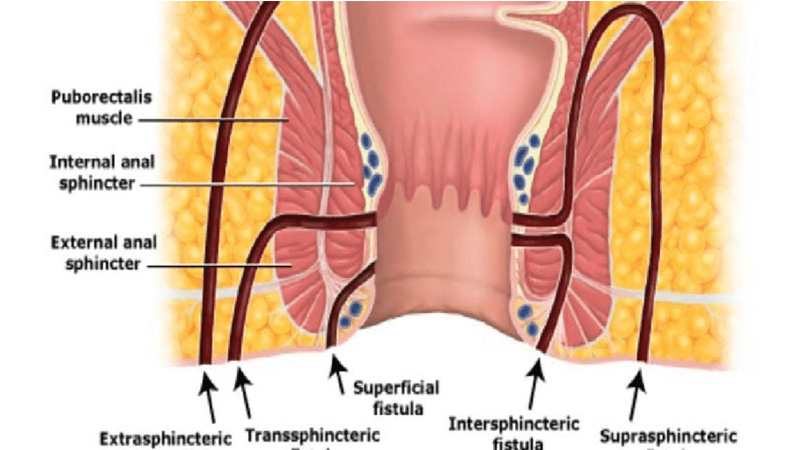
An anal fistula is a tunnel-like abnormality that runs from an abscessed area in the anal canal to an opening in the skin near the anus. Anal fistulas usually form because an anal gland has developed an infection that causes an abnormal tunnel to form between the colon and the anal canal running under the skin and out through a hole in the skin near the anus. There are many solutions to do this treatment, laser is a good choice.
Laser Treatment for Anal Fistula
A revolutionary method employs a conical laser probe, distinguished by its unique features. This specialized probe integrates a bare fiber within a conical glass tip, designed to illuminate a wide area with laser light. The conical tip ensures a gentle application of energy, combining wide illumination with a sharp distal end for effective tissue penetration. Unlike conventional surgical methods, this laser treatment presents a minimally invasive solution to close the fistula tract.
Procedure Detail
This laser probe is very flexible and it is threaded into the fistula tract and then withdrawn as laser energy is being emitted. While the conical laser probe is being pulled back slowly the tract is being closed. This eliminates the need for a surgeon to try to tediously extract the unwanted fistula tissue during a long complex surgery. The laser treatment takes only a few minutes and provides the possibility to completely spare the enucleation of the fistula out of the healthy tissue.
Comparison Of Laser Wavelength
A recent study explored the effectiveness of two different laser wavelengths in treating anal fistulas. The initial group, comprising eight patients, underwent treatment with a laser of 980 nm wavelength, requiring 13 watts of power to seal the tract. Subsequent patients were treated with a 1470 nm wavelength laser, utilizing a lower power setting of 10 watts. While the study reported no major complications, the group treated with the 980 nm wavelength experienced postoperative pain and anismus. The researchers suggested that employing a higher wavelength laser at lower power settings (10 watts) may yield superior postoperative outcomes compared to the 980 nm laser with 13 watts power.